Sintepon or synthetic batting is a modern filler related to non-woven materials. It is formed from several layers of synthetic fibers. In addition to them, the fabric sometimes has additives (wool, cotton).
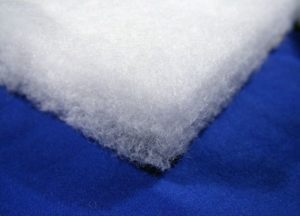 To bind the finest polyester fibers into a whole fabric, one of three methods is used.
To bind the finest polyester fibers into a whole fabric, one of three methods is used.
During heat treatment of polyester threads, their surface layer melts and firmly connects the synthetic threads to each other into a durable fabric.
Reference! The material obtained by exposing the threads to high temperatures is called eurosintepon.
Properties of thermally produced fabric:
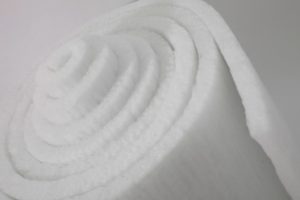 Curved, barbed needles are used to mechanically fasten synthetic fibers that have previously been woven together. The needles pass through the threads and securely fix them.
Curved, barbed needles are used to mechanically fasten synthetic fibers that have previously been woven together. The needles pass through the threads and securely fix them.
Properties of fabric created using the needle-punched method:
When connecting fibers in the third way, layers of synthetic threads are glued to each other. A quality manufacturer uses safe latex-based glue (PVA) for this. It is non-toxic and does not emit harmful substances.
Properties of glued padding polyester:
Important! Unscrupulous manufacturers use toxic types of glue, which can lead to allergic reactions and irritation.
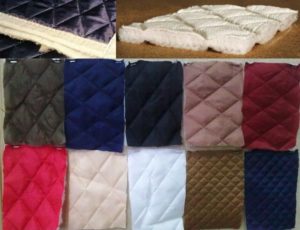 Sintepon differs not only in the way the fibers are connected.
Sintepon differs not only in the way the fibers are connected.
Depending on the composition, the following types of artificial batting are distinguished:
Reference! Most often, high-quality merino yarn is used for sherstepon, which imparts its qualities to the material. Sherstepon is more environmentally friendly than conventional padding polyester and retains heat better.
Sintepooh - a material consisting of 100% artificial fibers.
This type of filler got its name not by chance: synthetic down is soft, airy, elastic and very warm, like natural goose down.
Reference! When producing synthetic fluff, a silicone layer is applied to artificial hollow threads and then twisted into a spiral shape. The absence of glue makes the resulting material hypoallergenic.
Holofiber — material similar to synthetic fluff.
It also consists of synthetic threads and has no natural additives. The fibers used in the production of holofiber also have a hollow structure. The main difference between the two fillers is that when holofiber is formed, the threads are collected into small clumps. They are bonded together when treated at high temperatures.
Reference! In addition to the general properties of padding polyester (thermal conductivity, practicality, durability), holofiber is distinguished by its ability to remain dry in humid conditions (low hygroscopicity).
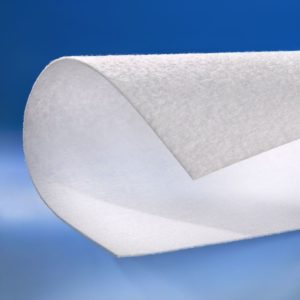 The thickness and density of artificial batting are also used to determine its characteristics.
The thickness and density of artificial batting are also used to determine its characteristics.
Reference! The thickness and weight of the fabric directly depends on its density: denser materials are always thicker and heavier than fabrics with a lower density.
Types of padding polyester by density:
An important indicator of a material is the raw materials used in its production.
Raw materials for filler are divided into 2 groups.
Primary raw materials are fibers that are used for the first time. They not only provide high quality fabric, but also do not harm human health. Most of the material is made from such threads.
Unscrupulous manufacturers make padding polyester from recycled materials: plastic bags, bottles, used synthetic fabrics. Recycling of polyester fibers can make them toxic.
Important! Recycled padding polyester (brown or green) is harmful to human health. It is not recommended to use items with insulation made from harmful padding polyester.
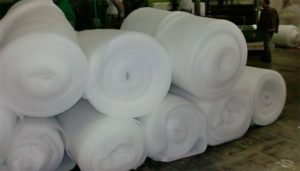 Synthetic batting has qualities that are important for insulation.
Synthetic batting has qualities that are important for insulation.
Advantages material is:
Artificial insulation has fewer disadvantages than advantages. These include:
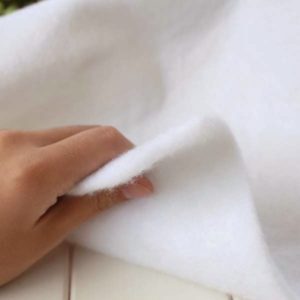 This practical and inexpensive filler is widely used in practice.
This practical and inexpensive filler is widely used in practice.
It is used when sewing outerwear. Winter jackets and children's overalls with synthetic padding are very comfortable, require little maintenance, and perform their protective functions well.
Modern bedding is also made on the basis of padding polyester. Pillows and mattresses with elastic filling hold their shape well, and blankets create conditions for thermoregulation. Bedding with padding polyester provides comfortable conditions for healthy sleep, relaxation and recuperation.
Thick padding polyester is also used in the manufacture of furniture. Linens become lining in sofas, armchairs and other pieces of upholstered furniture.
The use of padding polyester in any industry ensures high quality products combined with an affordable price.